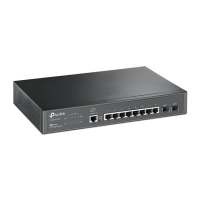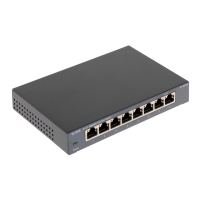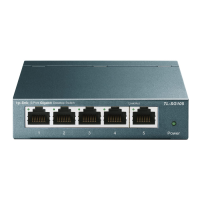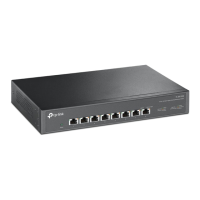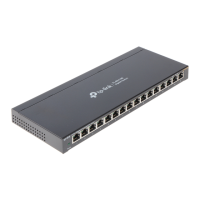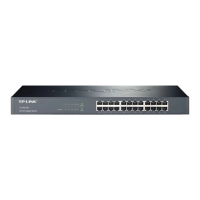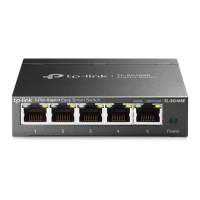169
Port: The port to be bound.
Profile ID: The existing Profile ID bound to the selected port.
Max Group: T
he maximum multicast group a port can join, range
from 0 to 1000.
Overflow Action:
The policy should be taken when the number of
multicast group a port has joined reach the maximum.
Drop: Drop the successive r
port cannot join any other multicast group.
Replace: When the number of the dynamic multicast
groups that a port joins has exceeded the max-group,
the newly joined multicast group will replace an
existing multicast group with the lowest multicast
group address.
LAG: The LAG number which the port belongs to.
Clear Binding: Click the Clear Binding button to clear all profiles bound
to the port.
Configuration Procedure:
Step Operation Description
1 Create Profile
Required. Configure the Profile ID and mode on
Multicast→MLD Snooping→Profile Config page.
2 Configure IP-Range Required. Click Edit
of the specified entry in the IGMP Profile
Info table on Multicast→MLD Snooping→
page to configure the mode or IP-range of the Profile.
3 Configure Profile Binding
for ports
Optional. Configure Profile Binding for ports on
Multicast→MLD Snooping→Porfile Binding page.
9.2.8 Packet Statistics
On this page you can view the MLD packets the switch received. It helps you to monitor the MLD
Snooping function.

